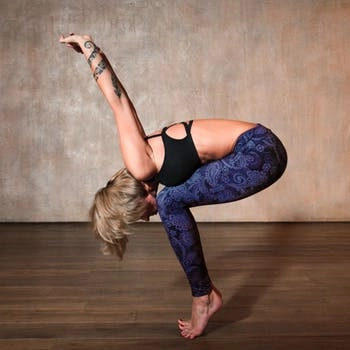Whether you are talking about your wrist, elbow, knee, or shoulder, tendonitis, and its cousin bursitis are painful and troublesome problems that can affect anyone at almost any age.
The pain of tendonitis usually comes on gradually, hurting just a bit more each day until one day, you simply can’t use the joint because it hurts so much!
Sometimes, however, due to an injury, tendonitis can come on within a few hours, causing some very intense pain.
One of the problems with tendonitis is that it doesn’t respond to the usual over the counter pain killers. People often don’t believe that “it hurts that much” because this is an injury they cannot see, unlike broken bones, cuts, or abrasions.
Inflammation hurts and that’s exactly what tendonitis is; an inflammation of the tendon, that thick cord that attaches the muscle to the bone.
It Goes By many Names
Because tendonitis is most often caused by repetitive motion, this type of injury goes by a variety of names associated with the movement involved, such as:
- Tennis elbow
- Golfer’s elbow
- Computer elbow
- Jumper’s knee
- Runner’s knee
- Pitcher’s shoulder
- Swimmer’s shoulder
How Do You Know if It’s Tendonitis?
Depending on what part of the body and how severe the inflammation is, tendonitis symptoms can vary, but most people experience the following:
- Pain in the affected area, sometimes described as a dull ache, but other times as a sharp, stabbing type of pain followed by a dull ache
- Tenderness
- Mild swelling
- Stiffness in the joint
- Difficulty sleeping because of the pain
The pain will usually begin when you start the activity that caused the tendonitis to begin with. For example, trying to run will get the pain in your knee started or using a computer keyboard will make your elbow begin to ache. Unfortunately, simply stopping the activity doesn’t make the pain instantly stop.
Again, while you can get tendonitis from an injury, lifting a weight that is far too heavy, for example, most people develop tendonitis from repetitive motion.
Can Tendonitis Ever Go Away?
While it sometimes feels as if tendonitis is a part of your life forever, for the majority of people, it does go away with proper treatment.
How long does it take for tendonitis to go away? This depends on the severity of the inflammation and the patient’s cooperation.
Many times, tendonitis will resolve itself within 4-8 weeks. However, depending on the situation, most people simply cannot take 4-8 weeks off of work or they don’t want to stop doing their favorite activity (golfing/gardening/baseball) for that amount of time.
Will I Need Surgery?

Probably not. Unless the tendon has ruptured (pulled off of the bone or muscle) surgery is rarely needed.
For some people, when the inflammation is slow to dissipate, or it doesn’t respond to rest and other treatments, cortisone injections are sometimes used, but this is also not very common.
Can I Treat Wrist Tendonitis at Home?
Yes. Almost every type of tendonitis can be treated from home, however, it can take weeks for your joint to heal.
What Should I Do?
Seeing your chiropractor can help to lower the amount of time it takes for tendonitis to go away. Once the inflammation is under control, your chiropractor will manipulate the joint, restoring mobility and removing any subluxations that might be present. Other modalities include chiropractic massage, ultrasound, and physical rehabilitation to strengthen the muscles and tendons.
Typical advice says to stop using the affected joint for several weeks and allow the inflammation to go away. Since this isn’t very practical, we’ve made a list of the best home remedies for tendonitis that might help speed healing and reduce inflammation more quickly. Tendonitis is no joke, so those in Anchorage appreciate Better Health Chiropractic & Physical Rehab’s Same-Day and 10-Minute promise.
Best Tendonitis Treatments at Home
1) Stop Exercising
While you might not be able to stop working for very long, you can help your tendonitis to heal by stopping any exercise you might be doing that will aggravate the affected joint.
This means that if you have tendonitis in your elbow, don’t do any weight lifting with that arm, or both arms if both are affected. You can do other exercises below the waist, such as jogging, but nothing that would involve the elbow.
If you are looking for tendonitis of the wrist treatments, as well as how to treat tendonitis in the elbow, this is a good place to start.
How long should you stop exercising? This is a tricky question. You don’t want to stop for too long as that will make the joint stiff and cause the muscles to become weaker, but you don’t want the inflammation to ramp up again.
Wait a minimum of 2 weeks, then start exercising again very gently and stop if you feel any pain. You might want to speak to your chiropractor about an appropriate time frame.
Both tendonitis and rotator cuff injuries take quite a bit of time to heal. Both tendonitis and rotator cuff injury healing times can take 2-4 months.
2) Start Eating an Anti-Inflammatory Diet

Tennis elbow treatments vary but limiting the inflammation should be your first goal. Inflammation causes pain, so it only makes sense to eat an anti-inflammatory diet. Certain foods cause inflammation and others quell that painful devil.
A few of the best anti-inflammatory foods include:
- All vegetables, but especially green leafy veggies like cabbage, broccoli, and spinach
- Clean protein, such as grass-fed beef, free range chickens, and fish
- Potassium and magnesium rich foods, including avocados, coconut water, and bananas
- Bone broth, which contains collagen, which helps build connective tissue like tendons
- Berries, packed with collagen building vitamin C, all types of berries are great for fighting inflammation since they are a terrific source of antioxidants
Foods that cause inflammation should be avoided at all costs. These include:
- Sugar, including sugary drinks like sodas
- Alcoholic drinks
- Excessive amounts of salt
- Fried foods
- Junk foods, such as potato chips
- Hydrogenated oils, including canola oil
- Refined grains, including white bread, pretzels, and highly processed cereals
3) Anti-Inflammatory & Other Supplements
You can also fight inflammation through a variety of supplements, ramp up your immune system, and nourish damaged connective tissue with some of the following supplements:
For Inflammation
- Omega-3 Fish or Krill Oil. These are terrific anti-inflammatory supplements that are not only good for the heart and brain, but they fight inflammation.
- Bromelain. This natural enzyme is found in pineapples and is known to be a good way to fight inflammation.
- MSM. Often found in supplements that also contain glucosamine and chondroitin, MSM does double duty since it acts as an anti-inflammatory and is a source of sulfur that tendons need to work properly.
- Curcumin. One of the most powerful anti-inflammatory supplements known to man.
Other Supplements
- Collagen. Your tendons and ligaments are both made up from collagen. You can restore your body’s supply and help to strengthen your damaged or weak tendons by consuming collagen.
- Evening Primrose Oil. This supplement lubricates the joints, helping to prevent stiffness.
- Boswellia. Also known as Indian Frankincense, this has been used for centuries not only to reduce inflammation, but as an analgesic. One study found that this plant extract reduces levels of an enzyme that destroys cartilage.
4) Epsom Salt Soak
How to treat tendonitis in the shoulder? Try soaking the affected area in a solution of Epsom salt and warm water will have several effects. First, Epsom salt is not salt but magnesium flakes. Magnesium relaxes muscles and is a well-known anti-inflammatory.
Soaking in warm water will also relax the muscles while improving circulation. Tendons don’t get their fair share when it comes to the body’s blood supply, so bringing improved circulation means fresh oxygen and healing nutrients right where you need it most.
5) Apple Cider Vinegar Compress
Mix a half cup of apple cider vinegar in an equal part of warm water. Soak a washrag in this solution and place it around the painful area, leaving it on for 15 or 20 minutes. Repeat this three times each day.
Apple cider vinegar contains acetic acid, which is a natural anti-inflammatory compound that can reduce pain and swelling.
6) Cayenne Pepper Massage
Mix one teaspoon of powdered cayenne pepper and mix it into two or three teaspoons of coconut or olive oil. Massage this mixture into the affected area and leave on for at least 30 minutes. Be careful to wash your hands afterwards and don’t touch your eyes!
The main ingredient in cayenne pepper is a compound called capsaicin. This substance has strong analgesic activity that can reduce inflammation but relieves pain by overstimulating the nerves.
7) Castor Oil Compress
Warm about a tablespoon of castor oil in the microwave or stovetop and massage this gently into the affected area for a minute. Apply a warm compress over the area and leave on for 20 minutes. You can rinse off the oil or leave it on. Repeat this method three times each day.
Your great-grandmother’s cure all, castor oil, contains ricinoleic acid, which has both anti-inflammatory and analgesic compounds that limit inflammation and offer some mild pain relief.

If you would like to shorten the amount of time it takes for tendonitis to heal or if you aren’t sure that tendonitis is the real cause of your pain, don’t hesitate to contact our clinic. Our friendly staff will be happy to check your insurance and answer all your questions. Patients of Better Health Chiropractic & Physical Rehab looking for help with tendonitis are always surprised to receive a Free 1-Hour massage certificate after their first chiropractic appointment.
If you believe this article was helpful, please feel free to pass it on to friends or family members who might also benefit from the information.
Schedule an Appointment and Receive
FREE One-Hour Massage Certificate
That’s right! Receive a certificate for a free one-hour massage with our highly-trained and licensed massage therapists for use after your first appointment. Use it yourself, or give it to a friend.
[gravityform id=”8″ title=”false”]









